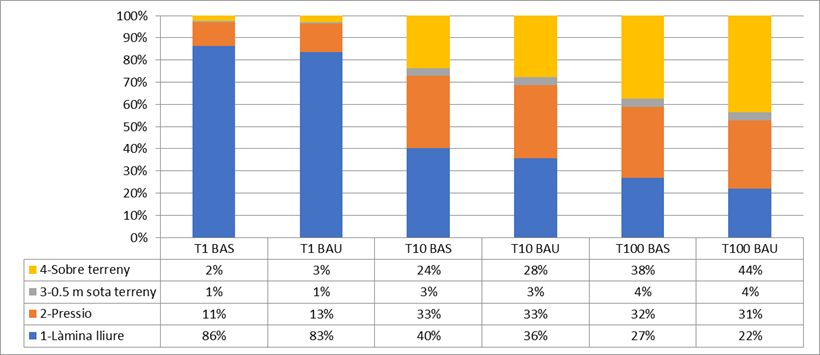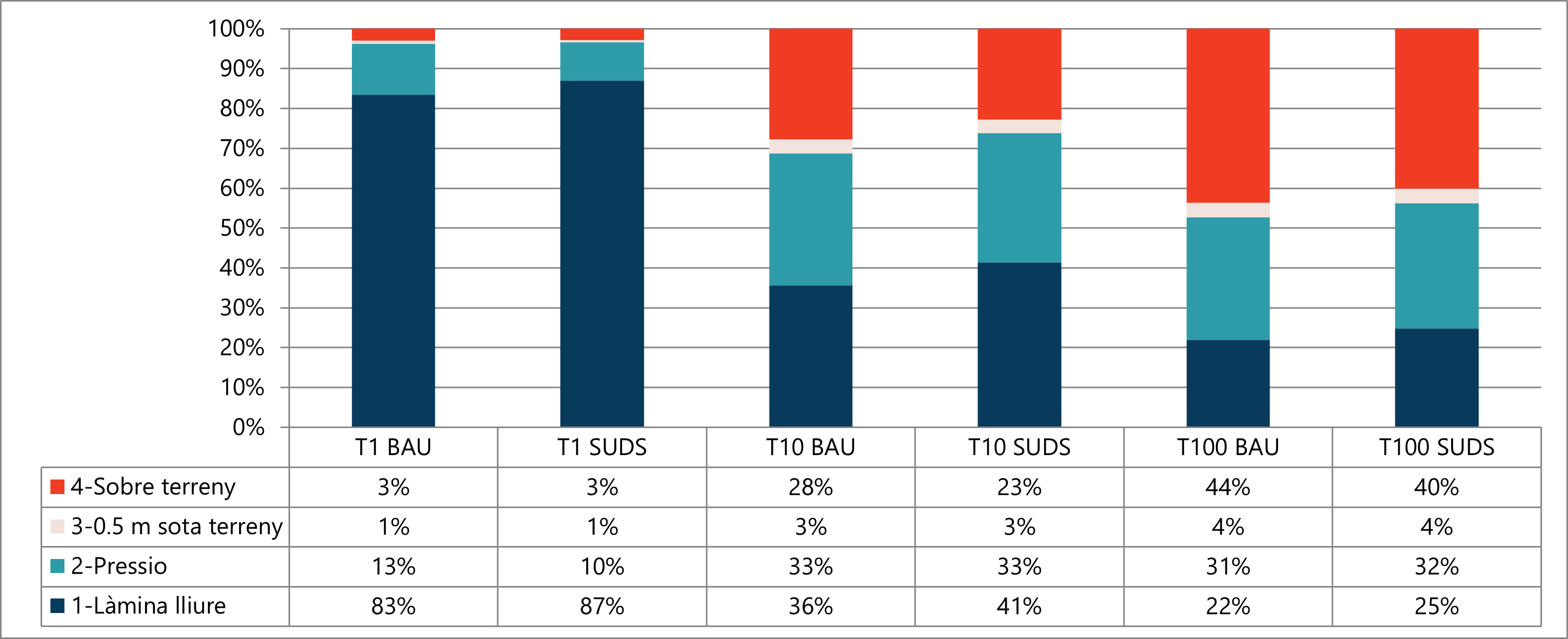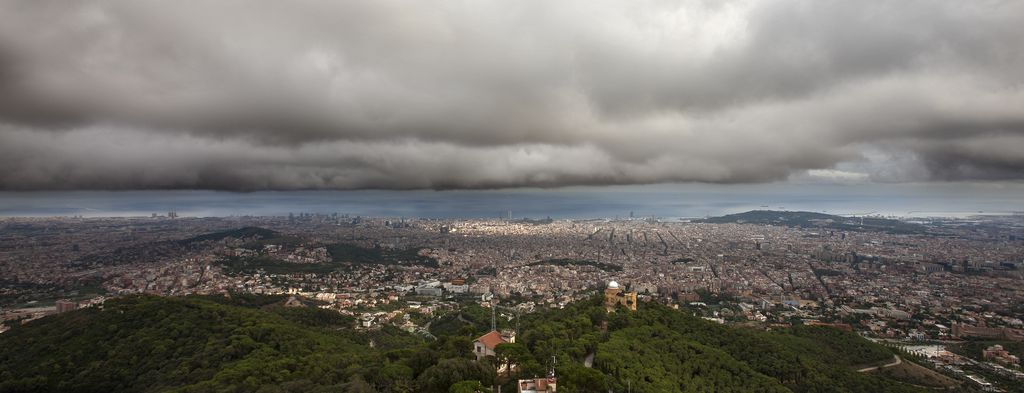Introduction
Mathematical monitoring of Barcelona’s urban drainage system serves as a starting point for analysing the flood hazard and evaluate the impact these floods on the urban services analysed in the project, as well as on people and assets. The urban drainage model used by the RESCCUE project is based on the model developed by Barcelona Cicle de l’Aigua (BCASA), for the Barcelona Sanitation Master Plan (PDISBA’19)
The main feature of the new model lies in modelling the city’s entire drainage system, both primary and secondary, characterizing all the singular elements that compose it (grids, drains, retention tanks, valves, pumping stations, etc.). The so-called 1D/2D model combines the underground drainage system with the behaviour of surface water circulation – the model’s main new feature – which allows information to be provided on the water variables depth, speed and extension of flooded areas in the city during rainfall episodes.
Calibration of the urban drainage model was developed according to the 10-year (T10) return period rainfall design, which is calculated on the basis of statistical models, establishing the total duration of the rainfall pattern and enables us to find out the moment when the highest or peak rainfall intensity occurs. Figure 1 compares the rainfall design for a 10-year return period calculated with rainfall data up to 2018 with the forecast for 2071-2100 in accordance with the climate change coefficients considered in the project. Current rainfall can be seen in blue and the future forecast in green. It shows how peak intensity increases considerably with climate change.

Once the model has been validated, the different return periods (T1, T10, T50, T100, T500) were simulated for the current scenario and the future scenario, applying the climate change factors obtained from the precipitation projections resulting from the statistical regression of 20 pluviometric series provided by 10 global climate models forced by the RCP 4.5 and 8.5, previously validated for the historical period 1976-2005.



